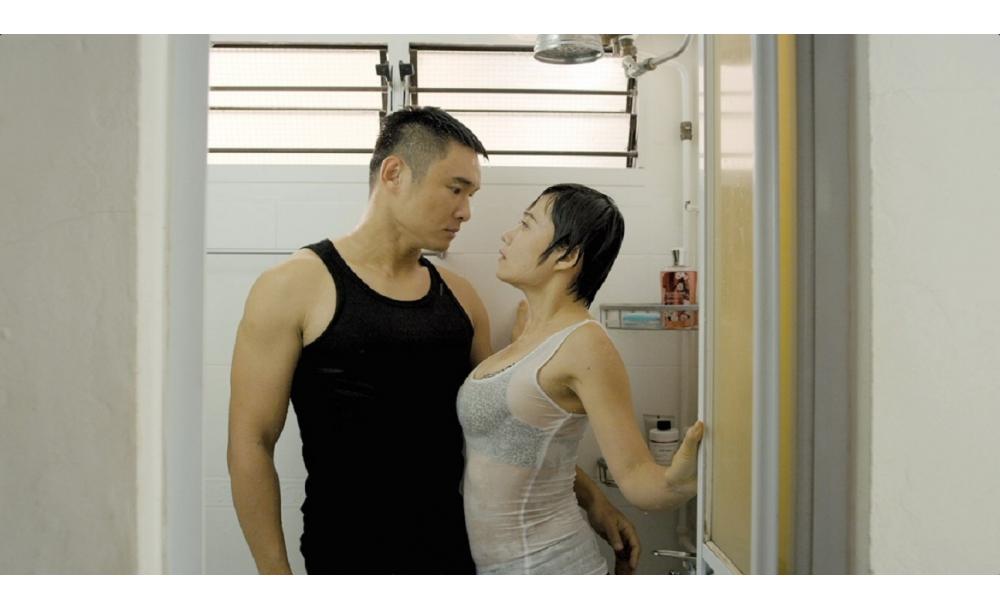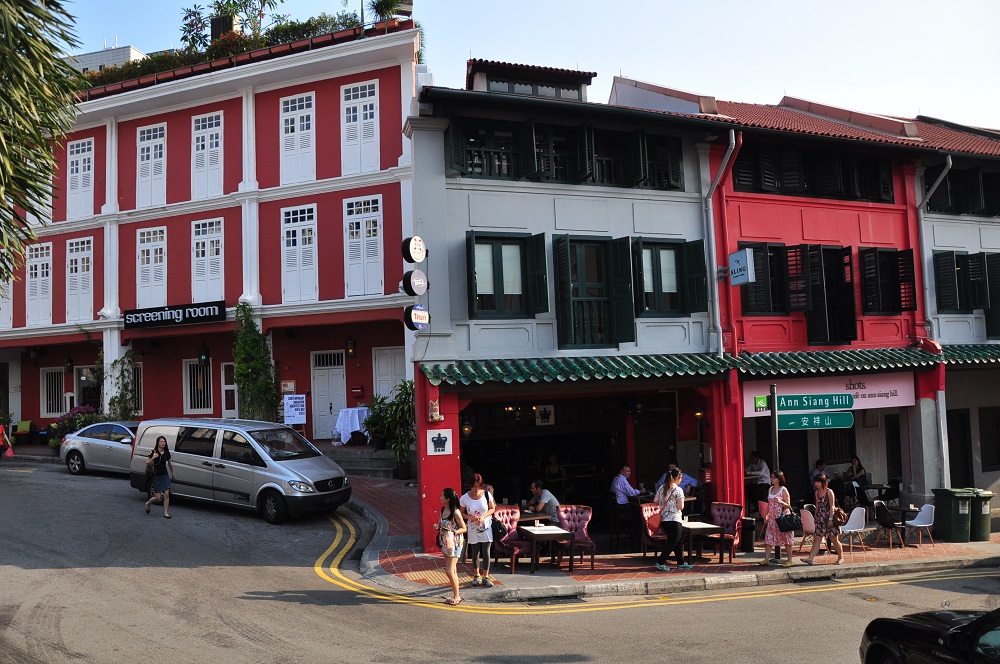We live in a clean and green modern city. Our running water is good enough to drink from the tap. We don’t have rubbish littering the streets rotting in the midday heat. There’s no sewage problem and we’ve got parks and gardens galore spotted around the island. So what’s the environment problem? What’s all the fuss about?
“We’re pampered. Our rubbish is cleared, our water is taken care of and relatively cheap, our infrastructure is so well planned. That’s our main challenge—to fight complacence, to educate people on green issues, and build a green culture among Singaporeans,” says Howard Shaw, executive director of the Singapore Environment Council, a non-profit organization that nurtures, facilitates and coordinates environmental causes and groups in Singapore.
And that’s just it. Singaporeans aren’t conscious of environmental issues. Complacence and the attitude that it’s “not my problem” blind us to the real picture. “There is a public perception that environmental conservation is the government’s responsibility,” Shaw adds.
The fact is, however, that our personal choices each day do add up.
Water, water everywhere
Take our daily showers. Leaving the tap on while we’re shampooing or soaping in a 10-minute shower means another 60 liters of water down the drain. Singaporeans use 700 million liters of water every day—enough to fill 280 Olympic-sized swimming pools.
Sure, we have various sources of water: Desalination plants, NEWater, reservoirs and, of course, the supply from our northern neighbor. But these all come at a price—to the environment and ultimately to us.
“There is a plan, announced in 2003 by the government, to create more reservoirs in the northern coast by damming six rivers, starting with Sungei Punggol and Sungei Serangoon which will be completed in 2009. Given the initial plan, natural habitats like Khatib Bongsu, which is also a nature area in the Singapore Green Plan, will be affected,” says Ho Hua Chew, chairperson of the Nature Society of Singapore’s Conservation Committee.
According to the book A Guide to Mangroves of Singapore, “estuarine and tidal habitats have been badly affected by the construction of reservoirs and land reclamation. Six estuarine reservoirs were formed by damming rivers draining to the north and west coasts between 1972 and 1984.” Now, over half our native freshwater fish, a third of our birds, and a quarter of the seed plants and mammals are extinct in Singapore—a direct result of our development and way of life.
Garbage, garbage everywhere
In 1970, 0.46 million tons of waste material was thrown away. In 2003, the quantity was 2.5 million tonnes—an alarming six-fold jump over 30 years. That’s a lot of trash.
Today, nobody carries their hawker center takeaway in a tiffin carrier—now, it’s all disposable plastic or Styrofoam boxes. Why bother to save that empty soft drink can till you find a recycling bin when you can bin it immediately? And forget keeping recyclable waste at home until the fortnightly collection. It’s so much faster, more convenient and hygienic to throw everything down the chute. Problem gone in a second. Or so we’d like to think.
Not too long ago, Singapore was an island of landfills. So far, five landfills have closed, having reached their capacities. If we continue our trash-throwing ways, the lifespan of our one and only landfill, on Pulau Semakau, will not be the 30 years it’s projected for. That means land-scarce Singapore will face the challenge, and cost, of having to find new places to contain all our junk.
There are now 5,700 recycling bins around the island, with a paltry 43 percent of condominiums and all HDB estates offering fortnightly recycling collection, but just 56 percent of Singapore households actually participate. What’s the problem, people? All you have to do is leave your colored trash bag of recyclables out or leave it at your condo’s designated area and it’ll be collected. Really, how difficult is that?
Plastic, plastic everywhere
Our infatuation with shopping is another bone of contention. According to the National Environment Agency, if each family uses just one less plastic bag a week, Singapore could save 40 million bags each year. Singaporeans use 2.5 billion plastic shopping bags every year. That’s about 2,500 bags per family per year. The solution is easy: pack your groceries more efficiently or, better still, bring your own cloth bag when you go shopping.
Plastic bags add to the litter, which is not only an eyesore, but also a potential breeding site for mosquitoes—and we all know what that can lead to. In the natural environment, plastic bags also contribute to the suffocation of plant and marine life. Inevitably, litter, plastic or otherwise, thrown on the ground gets washed into the storm drains which bring rain water to our reservoirs. So next time you litter, remember, you’re polluting the water we drink.
Conspicuous consumption
But all these are signs of a deeper problem. As Victor Savage of the Department of Geography at National University of Singapore points out, cities are unecological entities to begin with. So inevitably, there will be repercussions of an urban lifestyle. “The crux of consumption is that it is the result of a capitalist system. With increased productivity and economic growth, it is inevitable that people consume more and more,” says Savage.
“The problem lies in the way we flaunt wealth, the fetishes that we have. It’s not enough that we could take up hobbies like swimming or walking. It’s got to be golf, for example. Some 56,000 golfers have exclusive use of 22 golf courses in Singapore that are open only to the select few.” In other words, an area approximately two and a half times the size of Ang Mo Kio is used by only 1.4 percent of the population in land-scarce Singapore. (Incidentally, Ang Mo Kio has 164,000 residents or four percent of the total population.)
This is seen in transport as well, says Savage. “It’s not enough to take public transport, or get a small car. Singaporeans choose to drive large SUVs and MPVs. More cars on the roads mean more lethal carbon monoxide in the air. And it’s not the drivers in their comfortable, air-conditioned cars who suffer most. The passive pollution inhalers are the pedestrians, us.”
Savage acknowledges that the government has taken steps to counter the problem caused by cars, such as implementing unleaded petrol and the ERP. “What I don’t understand is why the government is so draconian about smoking laws, while they’re not as equally severe about pollution caused by vehicles. The smoker is merely killing himself, but the air pollution from vehicles affects everybody and the very air we breathe.”
Sadly, it’s a vicious cycle. “It’s a scenario of a nouveau riche society. Singaporeans aspire to have these wants, and therefore do not question the inequality or the decadence.”
There is hope yet
The good news is that between 2000 and 2005, Singapore’s overall recycling rate of waste rose from 40 percent to 49 percent, while the need for additional incineration plants has been reduced from one in every five to seven years to one every seven to 10 years.
“There are more green clubs in schools now, and more active participation in projects initiated by students. What’s also encouraging is that there are more environmental groups that are not school-related, about a dozen or so when there were none some 10 years ago,” says Shaw.
There are now also more green spaces on the island for recreation. “Manicured man-made parks serve the larger population. At least it gets people out and appreciating what nature there is—because certainly our nature reserves can’t support the number of recreational users,” says Shaw. “The trick is to link the brown and the green. If people appreciate nature, then they’ll want to conserve it.” And Singaporeans are appreciating nature, as the hordes each Sunday at Botanic Gardens and Bukit Timah Nature Reserve testify, albeit with their left-behind litter of plastic bottles, sweet wrappers and used tissues.
As with almost everything, it all comes down to a bottom line. “Once there is an economic and political reason, it would be inevitable that more effort will be put into saving the environment. Just like why Singapore is finally acceding to the Kyoto Protocol this year. It’s because we want to be a carbon-trading country,” says Savage. Likewise, Shaw aims to show more companies that being environmentally friendly will improve their bottom lines.
But why must it come down to that? “The hope is that Singaporeans will get to the stage of thinking that we are part of the global environment,” wishes Shaw. “And the way to do it hinges on repackaging the notion of environmental conservation. It is all about marketing. It’s got to be hip to be green.”
Here’s the harsh reality, people: We are part of the environment. We live it and breathe it. And if we mess it up, all we’re really doing is hurting ourselves. It takes a change of mindset … and at the risk of sounding annoying—reduce, reuse, recycle.
Do you know…
- Roads make up 12 percent of Singapore’s area —nearly the same amount taken up for residential purposes. In contrast, gazetted nature reserves take up under three percent.
- Just 119 out of over 727,000 vehicles on our roads are natural gas vehicles. Minister of Environment and Water Resources Yaacob Ibrahim was one of the first few to buy the hybrid Toyota Prius.
- Petrol and diesel engines achieve less than 45 percent efficiency. That means more than half of the (expensive) fuel you buy is wasted, as it literally goes up in heat and smoke.
- The level of ultra-fine pollutants, which cause respiratory health problems, is 40 percent higher (21 micrograms per cubic meter) in Singapore’s air than the level (15 micrograms per cubic meter) set by the US Environmental Protection Agency. The main culprit for this is an increase in the number of vehicles on the road. (According to 2005 LTA statistics, residents here made about 3.11 million trips per day by cars and vans, versus 2.52 million in 1997.)
- Reducing shower time by one minute can save nine liters of water.
- Washing dishes in a filled sink as opposed to under a running tap can save 48 liters of water.
- Recycling paper reduces air pollution by 74 percent and water pollution by 35 percent. Each ton of paper recycled can save 17 small trees.
- National Parks Board has started a Plant Conservation Strategy, where 102 species of native plants have been cultivated.
- Singapore has acceded to nine international environment agreements such as the Vienna Convention of the Protection of the Ozone Layer, the Stockholm Convention on Persistent Organic Pollutants, the UN Framework Convention on Climate Change, and the Kyoto Protocol.
Green businesses
City Development Limited (CDL)
Who:
Real estate developer CDL is an international property and hotel conglomerate. It has built over 17,000 luxurious and quality homes in over 80 prestigious projects in Singapore and the region. The group is also one of Singapore’s biggest commercial landlords, with about four million square feet of office, industrial and retail space.
Green efforts:
- Established a corporate Environmental, Health and Safety policy which monitors energy use, water and waste management in 2001. Their contractors are appraised and trained in environmental awareness.
- Developed first eco-condo, Savannah CondoPark at Simei, in Nov 2002. Here, energy-saving lights were used in common areas, dimmers were installed within each unit, water heaters in the clubhouse are powered by rooftop solar panels, and there are designated recycle corners found near each lift lobby in the basement car park. Residents are given a “Let’s Go Green!” pack upon arrival, which offers tips on how to adopt eco-friendly habits as part of their lifestyles.
- Put in place a permanent recycling program for 16 of its commercial buildings and one hotel.
- Organizes road shows, seminars and recycling drives as part of their Project Eco-Office, to share the economic and social benefits for companies to go green.
Why:
Head of Corporate Communications Department Belinda Lee says, “At CDL, we believe that a socially responsible business strategy is a winning formula that can benefit all stakeholders in our community.”
Mitsubishi Electric Asia
Who:
Mitsubishi Electric Asia offers products ranging from aircons, fridges to mobile phones, projects and digital printers.
Green efforts:
- Governed by a Global Environment Policy. Their basic principle of environmental management is to determine the environmental impact at every stage of a product or service—material procurement, transport, product use, collection, and recycling.
- Their Green Factory policies include introducing lead-free soldering and eliminating the use of hazardous substances. They also use natural gas (instead of fossil fuels) as their main energy source.
- The Mitsubishi StarMex aircons have energy-saving features, and use a new refrigerant which has zero ozone depletion potential.
- Publish annually an Environmental Sustainability Report to monitor and be accountable for their progress towards the green cause.
Why:
In the 1930s, the fourth President of Mitsubishi, Koyata Iwasaki, articulated three guidelines for the company, including one that said: “Enrich society—both materially and spiritually—and safeguard the environment.” For the past eight decades, Mitsubishi has been keeping to this corporate mission.
Senoko Power
Who:
Senoko Power is the largest power generation company in Singapore, providing approximately 32 percent of the nation’s electricity needs.
Green efforts:
- Over 90 percent of electricity generated from Senoko Power is generated from high-efficiency, environmentally friendly, natural gas-fired combined cycle plants—the first power generation company to do so.
- Completed the construction of the $600m Stage I Repowering Project. As such, their plants emit lower concentrations of carbon dioxide and nitrogen oxide, well below industry norms. The $7m reverse osmosis desalination plant was also constructed to meet their industrial water requirements.
- Adopted 10 schools under the National Environment Agency’s Adopt-A-School Programme, sponsoring their environmental projects.
- Launched the National Weather Study Project in 2005 to increase awareness among students about the importance of climate change and the environment.
Why:
“Senoko Power recognizes we all have a role to play to protect the environment for our future generations. Care for the environment is among the top priorities of the company. While we aspire to provide quality power supply and services to our customers at a competitive rate, we operate our businesses in a manner that ensures a healthy and clean environment for our employees, customers and the public,” says President & CEO of Senoko Power Roy Adair.





